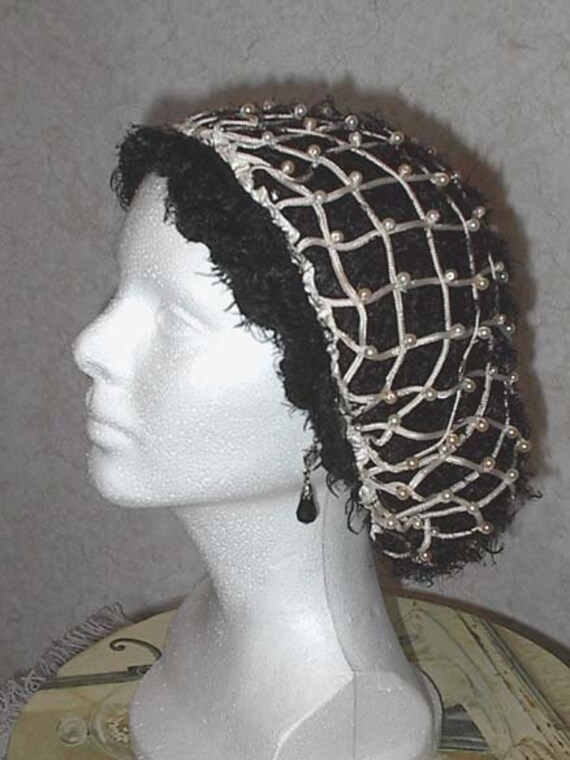E L I Z A B E T H S H A I R

Of course the ideal tudor woman had a snow white complexion with strawberry blonde hair, but having just the perfect hair colour was not good enough, how the hair was presented with different hairstyles and jewels could show the wealth and status of women. Although Queen Elizabeth achieved her extreme pale skin using make up, her hair was natural and idolised by many women as it showed her as the pure 'Virgin Queen'. This is where women started to dye their hair to look like Elizabeth with mixtures such as saffron, cumin seed, celandine and oil which in the long run could end up damaging hair badly.
W I G S
Elizabeth was also a big fan of wigs and she owned more than 80 of them to compliment her fashionable dresses and jewels which she wore everyday.
Hair became very important when fashion did as it complemented the fashion especially when the collars which were attached to dresses and raised up to the neck and back of the head became fashionable, because at is framed the face an Elizabethan up do complemented the look and showed off the ruffles on the collar.
A frizzy texture to the hair was also very popular for the women to have and fringes were out of fashion with a far back hairline which the queen had therefore idolised by other women.
Head coverings
Hats were used often to compliment their dresses and covered most of the head leaving the front of the hair with a shape that the hat was formed in.
 The coif
The coif : Coifs were useful as they were worn to keep the hair in place and was usually plain coloured.

The French Hood : Symbols were very important to Queen Elizabeth to show her purity and wealth. Pearls and jewels were very popular in the french hood with a veil that covered the head.
 The Atifet
The Atifet : The heart shape was also popular not only in wigs but also in head coverings.

The Caul: Covered the back of the hair and was favoured by Queen Elizabeth
Many of the hats were adorned with feathers, pearls, jewels, gold thread, and lace.








